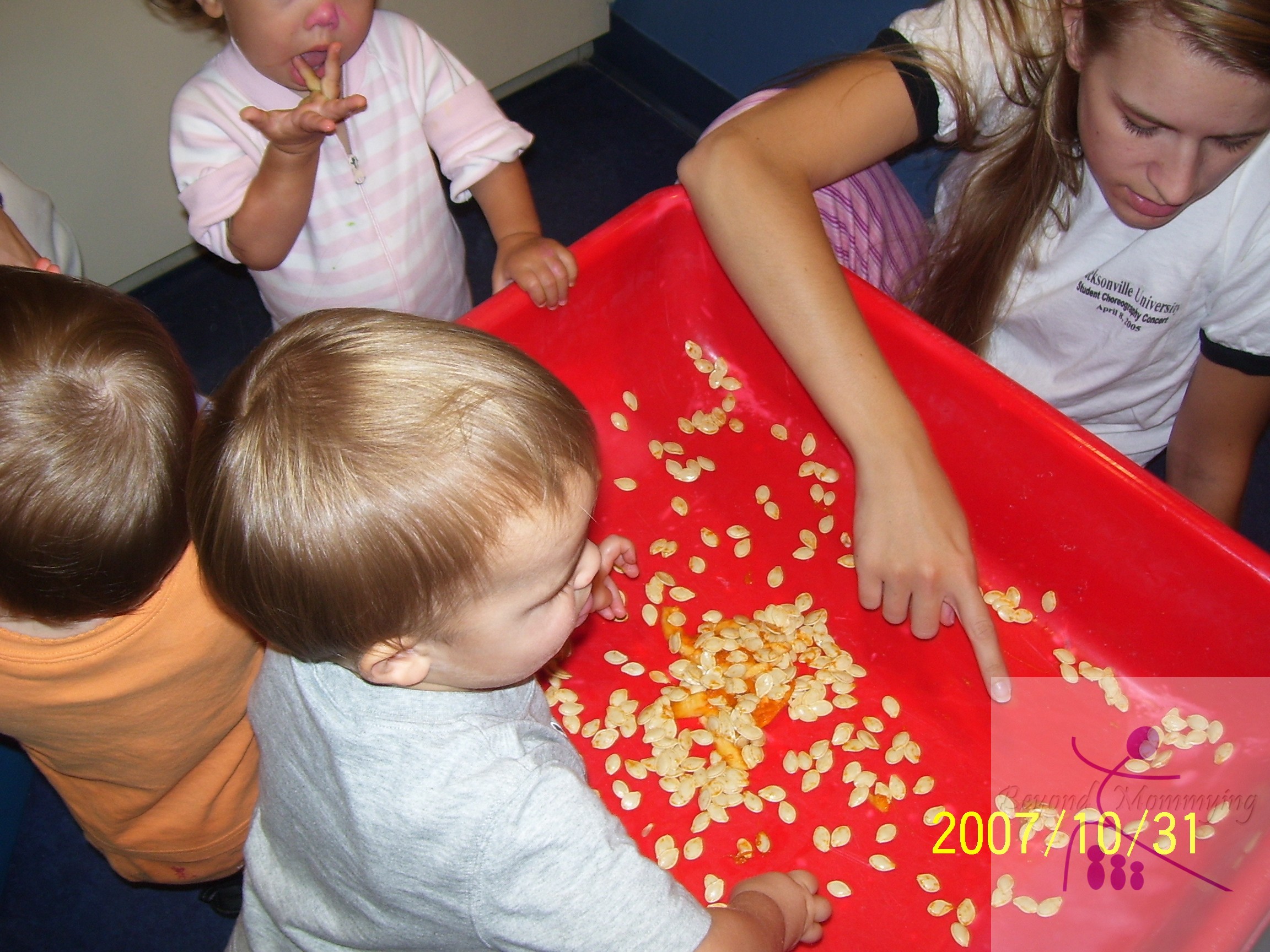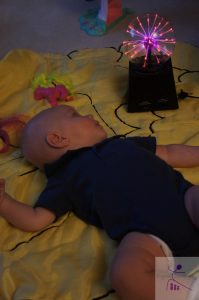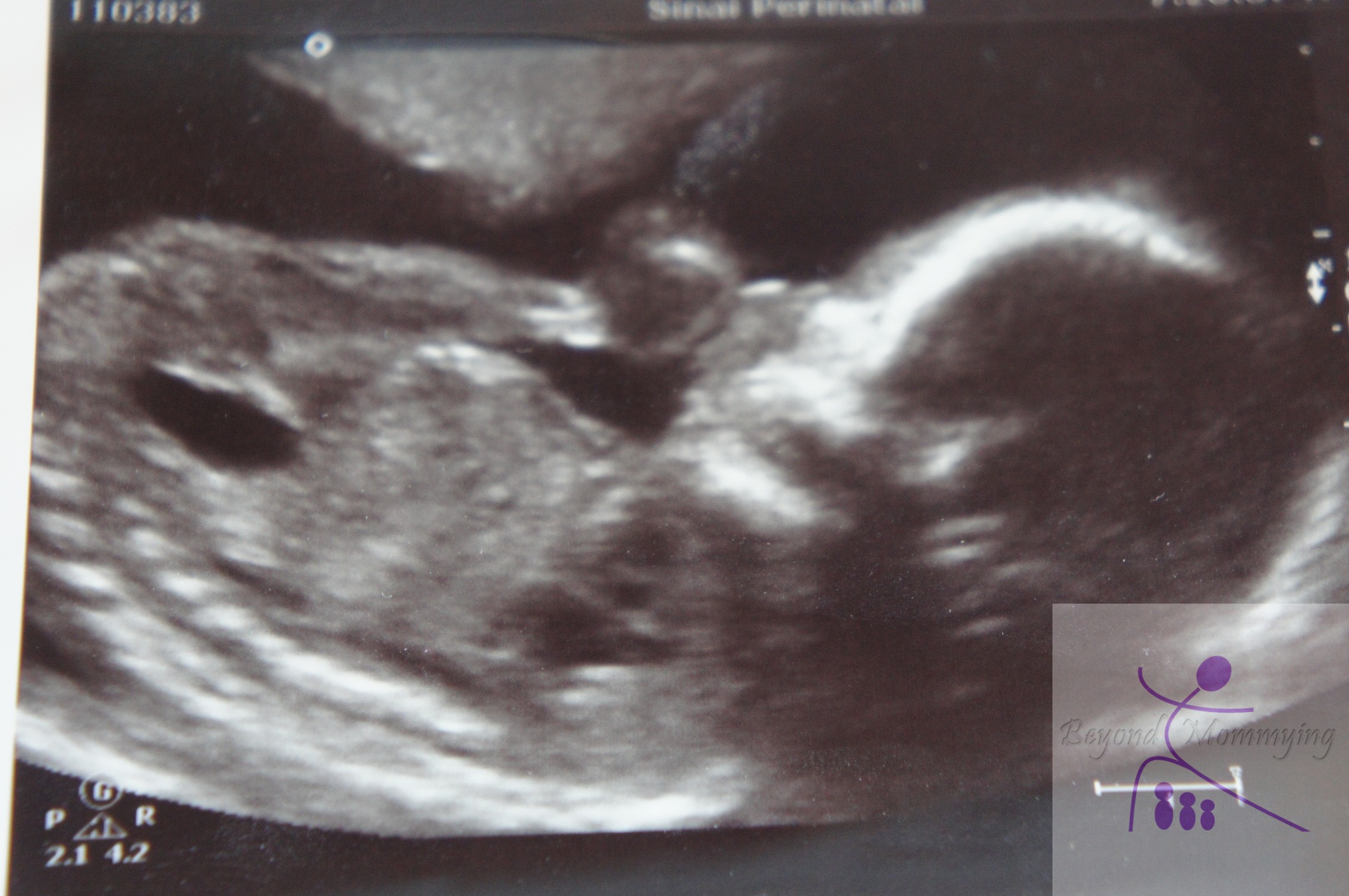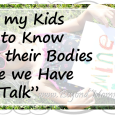For this month’s developmental milestone, I’m going to combine with July (and perhaps even August) and do a “Sensory Summer.”
 Sensory play (the tactile kind) was always my favorite as a teacher and I was the teacher that was always down in the mess with the kids. And I’m looking forward to doing many sensory experiences with my own little ones this summer. I love getting my hands into new things and experiencing new phenomena but this isn’t true for all kids.
Sensory play (the tactile kind) was always my favorite as a teacher and I was the teacher that was always down in the mess with the kids. And I’m looking forward to doing many sensory experiences with my own little ones this summer. I love getting my hands into new things and experiencing new phenomena but this isn’t true for all kids.
This summer, I’ll touch on the development of the sensory system and ways to develop and stimulate children’s different sensory modalities and activities to encourage each (that are also fun!) I’ll also discuss sensory problems like Sensory Processing Disorder (commonly known as SPD, but not the same SPD I had while pregnant with Doodle!), what they are and strategies for working through them.
There are five sensory modalities which make up the human sensory system: Touch, Taste, Smell, Hear, See. And though they can be individually distinguished, it’s important to remember they work together in our daily lives and in most activities.
Each sensory system has it’s own organs which collect information about one’s situation and experience.
 Touch: the sense of touch utilizes the largest human organ, our skin (yes, skin is technically an organ!) and is also the only sense that is throughout the body. The sensation of touch can be utilized by our fingers, toes and everything in between. Nerve endings in the skin transmit information to the brain telling us about what we are feeling (hot/cold, soft/hard, smooth/rough, etc.)
Touch: the sense of touch utilizes the largest human organ, our skin (yes, skin is technically an organ!) and is also the only sense that is throughout the body. The sensation of touch can be utilized by our fingers, toes and everything in between. Nerve endings in the skin transmit information to the brain telling us about what we are feeling (hot/cold, soft/hard, smooth/rough, etc.)
 Taste: the sense of taste utilizes the tongue where taste buds are used to transmit information to the brain and tells us about what we are eating or put in our mouths. Our mouths can sense sweet, sour, bitter, salty and umami.
Taste: the sense of taste utilizes the tongue where taste buds are used to transmit information to the brain and tells us about what we are eating or put in our mouths. Our mouths can sense sweet, sour, bitter, salty and umami.
 Smell: the sense of smell utilizes the nose using mucous membranes to transmit information to the brain and tells us about aromas or vapors. Smells are categorized as camphor, musk, flower, mint, ether, acrid, or putrid.
Smell: the sense of smell utilizes the nose using mucous membranes to transmit information to the brain and tells us about aromas or vapors. Smells are categorized as camphor, musk, flower, mint, ether, acrid, or putrid.
 Hear: the sense of hearing utilizes the ear and transmits information to the brain via the system of the tympanic membrane, a series of small bones in the middle ear, the cochlea and the auditory nerve. The brain combines the input of our two ears to determine the direction and distance of sounds. The human ear can detect sounds from a very deep bass (16 cycles per second) to very high pitch (28,000 cycles per second) and the inner ear also transmits information on motion and acceleration.
Hear: the sense of hearing utilizes the ear and transmits information to the brain via the system of the tympanic membrane, a series of small bones in the middle ear, the cochlea and the auditory nerve. The brain combines the input of our two ears to determine the direction and distance of sounds. The human ear can detect sounds from a very deep bass (16 cycles per second) to very high pitch (28,000 cycles per second) and the inner ear also transmits information on motion and acceleration.
 See: the sense of sight utilizes the eye via a complex system involving the lens; retina; rod cells and cone cells; and optic nerve which transmits what is “seen” to the brain. The cone cells recognize color whereas the rod cells don’t see color but are more sensitive to light intensity and are responsible for peripheral and night vision.
See: the sense of sight utilizes the eye via a complex system involving the lens; retina; rod cells and cone cells; and optic nerve which transmits what is “seen” to the brain. The cone cells recognize color whereas the rod cells don’t see color but are more sensitive to light intensity and are responsible for peripheral and night vision.
(the above information is from scientificpsychic.com)







